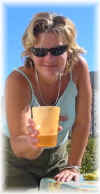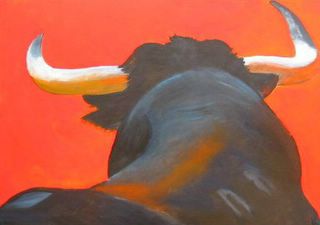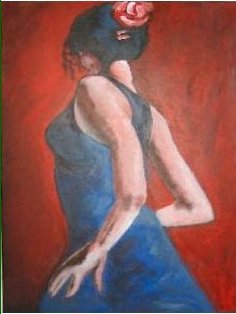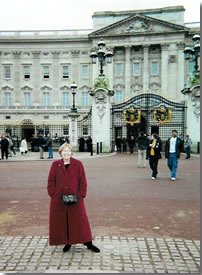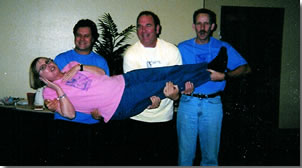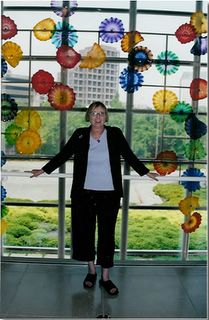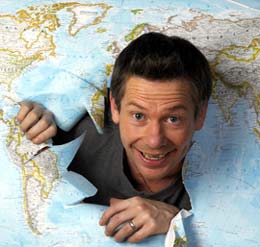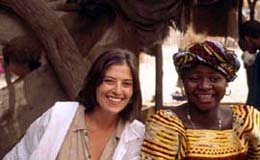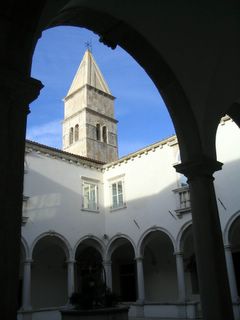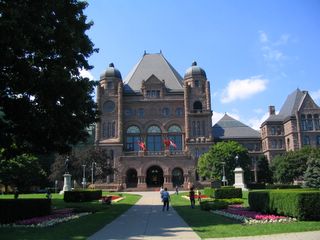
Queen's Park - seat of the Ontario government
 Neighbourhoods
Neighbourhoods
Toronto has a multitude of ethnic neighbourhoods, including Greektown (where the action keeps going until way after midnight), Little Italy, Corso Italia, 3 Chinatowns, Korea Town, Little Poland, Little India, Portugal Village. Other ethnic communities also congregate in certain parts of town and you can explore Jewish, Russian, Ukrainian, Somalian and many other restaurants and stores where you can browse for ethnic food, fashion and art from far away places and check out delicacies from the entire world in Toronto’s more than 7000 restaurants.
In addition to the ethnic flavour that Toronto so plentifully offers, there are a variety of other unique neighbourhoods. Downtown has several interesting areas to visit:
- the Financial District with all its skyscrapers. It also houses the "underground city" - 11 km (6 miles) of interconnecting passageways under the streets that feature more than 1,200 retail stores and services.
- the Downtown Entertainment District – bars and dance clubs galore
- Queen Street West – a hip and eclectic shopping area
- the Gay Village: this is where Toronto’s large gay and lesbian community congregates. Here you can find bars, shops, restaurants and open-air patios
- the Fashion District with a myriad of fashion outlet stores and loft apartments that were converted from 19th century factories
- Harbourfront with its boat cruises and the ferry terminal, restaurants and art, theatre and music venues
- Rosedale and Forest Hill: two stately very upscale neighbourhoods in a park-like setting
- Cabbagetown: a former working class area, it now houses beautiful renovated Victorian homes
- the Distillery District: North America’s best preserved collection of Victorian industrial architecture, formerly the Gooderham & Worts Distillery founded in 1832. It now houses galleries, artist studios and workshops, boutiques, retail stores, restaurants, bars and cafés
- The Beaches, one of my favourite areas, with its shops, parks, sports facilities, bike trails and beach volleyball facilities are Toronto’s version of California on the waterfront.
Check out more information on Toronto’s neighbourhoods
here.
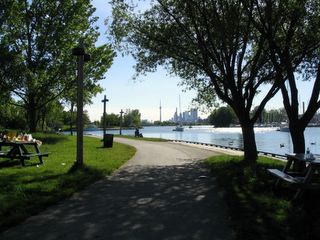
Toronto's Beaches: a serene place for relaxation and recreation.
 Main Sights and Architecture
Main Sights and Architecture
Being a relatively young city, Toronto has a rather eclectic mix of architecture which includes
- the CN Tower, at 553 m the world’s highest free-standing structure
- the Skydome, a modern multi-purpose stadium with a retractable roof
- the shiny downtown skyscrapers
- Historic Fort York, the site of the Battle of York during the War 1812 and the birthplace of modern Toronto
- Old City Hall, built in the Richardson Romanesque style
- the campus of the University of Toronto, Canada’s largest university
- Casa Loma, built in the 1920s as a dream castle by Sir Henry Pellat, a wealthy famous Toronto industrialist
- Queens Park, the provincial government buildings, also built in Romanesque style

Casa Loma, Toronto's fairy tale castle.
 Culture: Theatre, Music. Museums
Culture: Theatre, Music. Museums
Toronto is the 3rd largest theatre centre in the world. Here you can enjoy Broadway-style musicals, homegrown productions, traveling road shows and classical concerts. Some of the great theatre and music venues include the Royal Alexandra Theatre, the Princess of Wales Theatre, the Elgin/Winter Garden Theatre, the Hummingbird Centre for the Performing Arts, Royal Thomson Hall and many others.
A more complete list of theatres and production companies can be found at this link:
http://www.showmetoronto.com/toronto_theatres.htmToronto also boasts a great diversity of cultural institutions and museums:
- the ROM (Royal Ontario Museum)
- the AGO (Art Gallery of Ontario)
- the Bata Shoe Museum
- the Hockey Hall of Fame
- the Museum of Contemporary Canadian Art
- the Bay of Spirits Gallery – Toronto’s finest collection of native arts and crafts
- Black Creek Pioneer Village: a collection of 40 restored homes, tradeshops, public and farm buildings, with interpreters and artisans in period dress
- The Holocaust Centre of Toronto
- The Ontario Science Centre
Markets and Shopping:- St. Lawrence Market: the city’s original market, where farmers, artists and artisans ply their wares. Known for the freshness and high quality of its meat, fish and farm products.
- Kensington Market: known in the 1920s as the Jewish Market, Kensington Market today is a collection of merchants from around the world. Here you can find fishmongers, street musicians, impromptu speechmakers and shoppers all crowding the streets.
- The Eaton Centre, Toronto’s famous indoor shopping mall, built around an airy atrium, features 285 stores in the heart of downtown Toronto. It is one of Canada's great public spaces.
- The Bloor Street/Yorkville holds many upscale designer boutiques, antique shops, galleries, spas and restaurants.
http://www.torontotourism.com/http://www.city.toronto.on.ca/http://www.toronto.com/http://www.torinfo.com/http://www.showmetoronto.com/SQ.
http://www.travelandtransitions.com/http://www.textronics.com/
